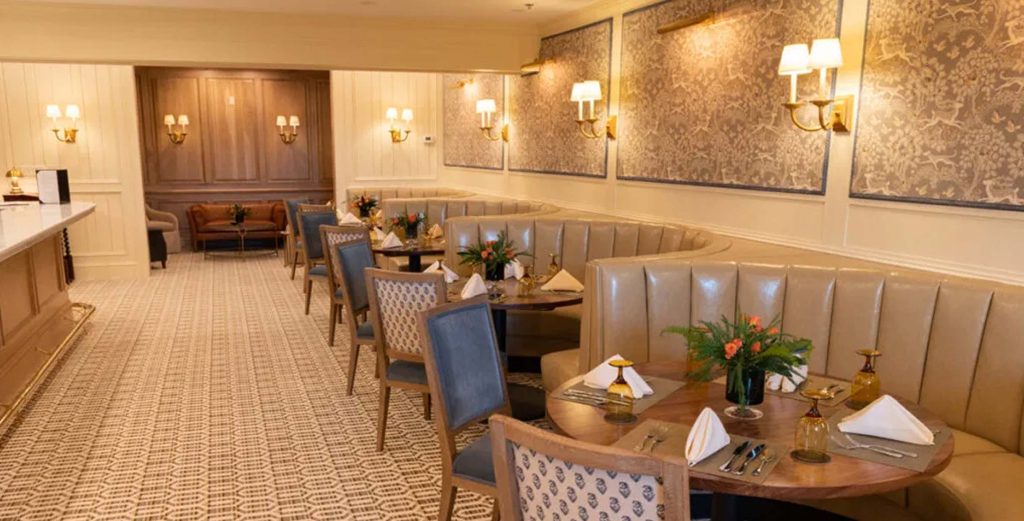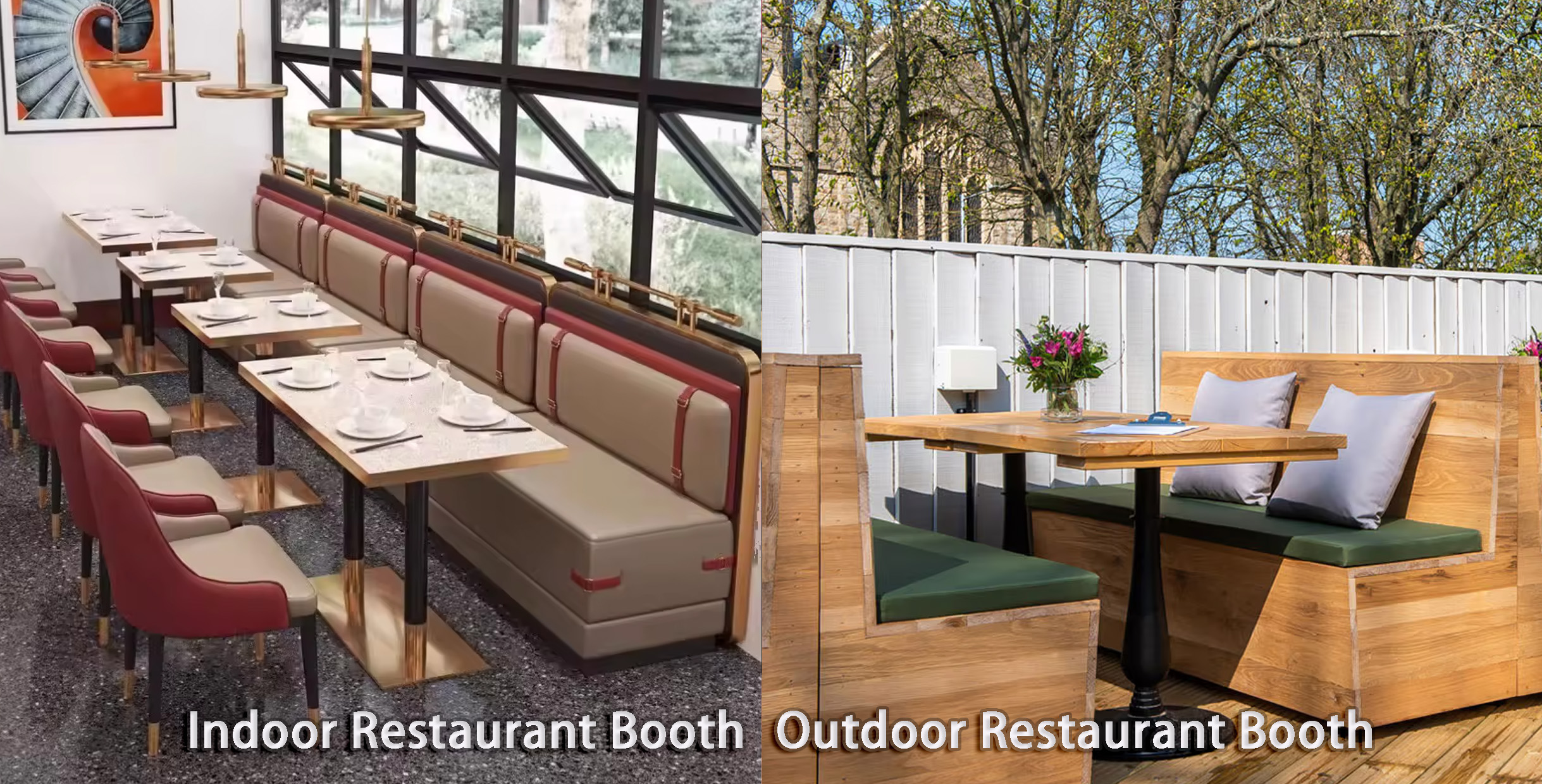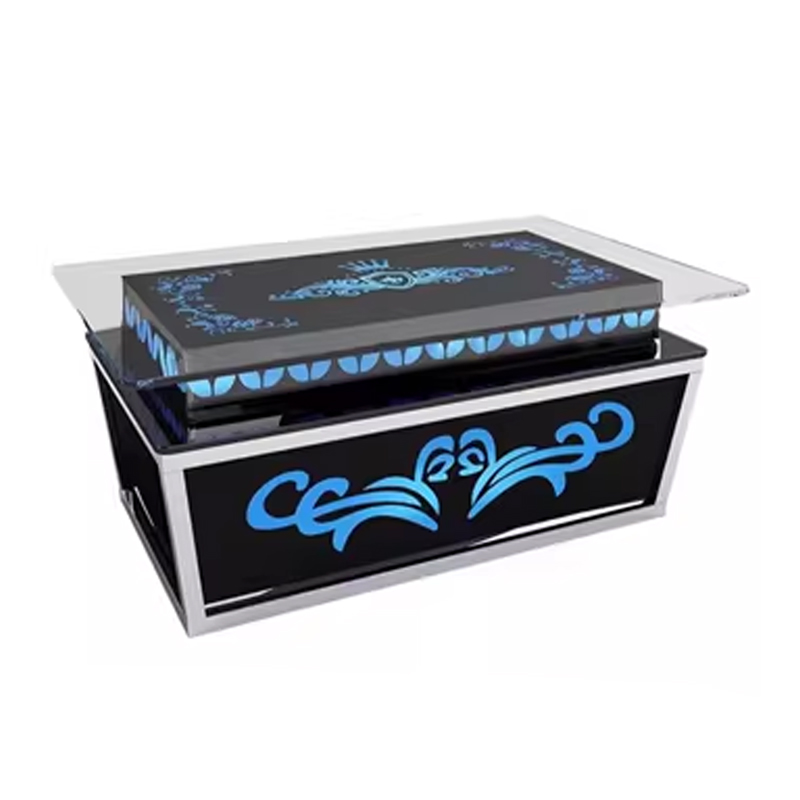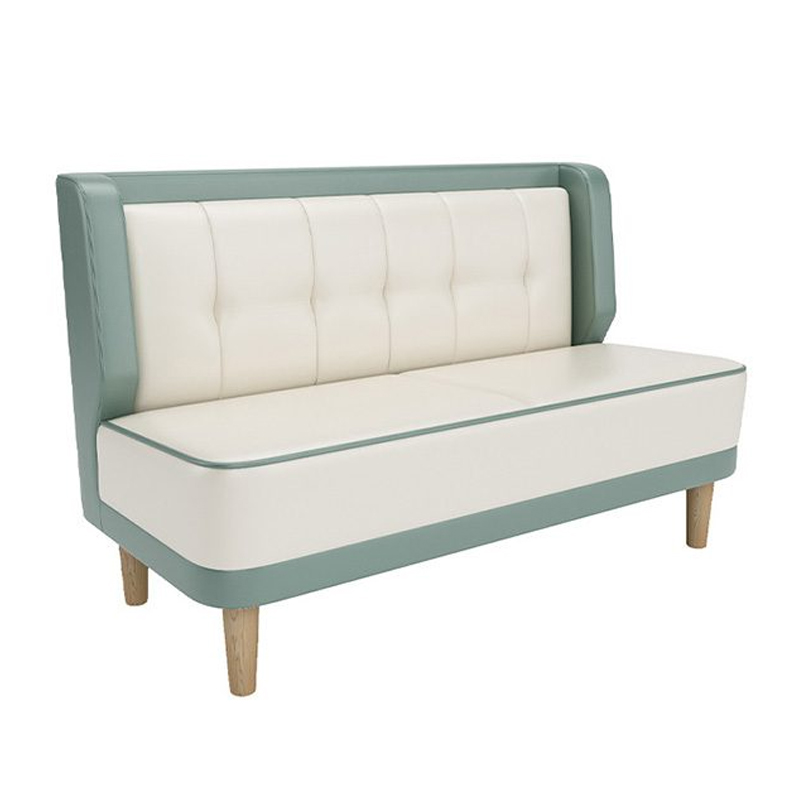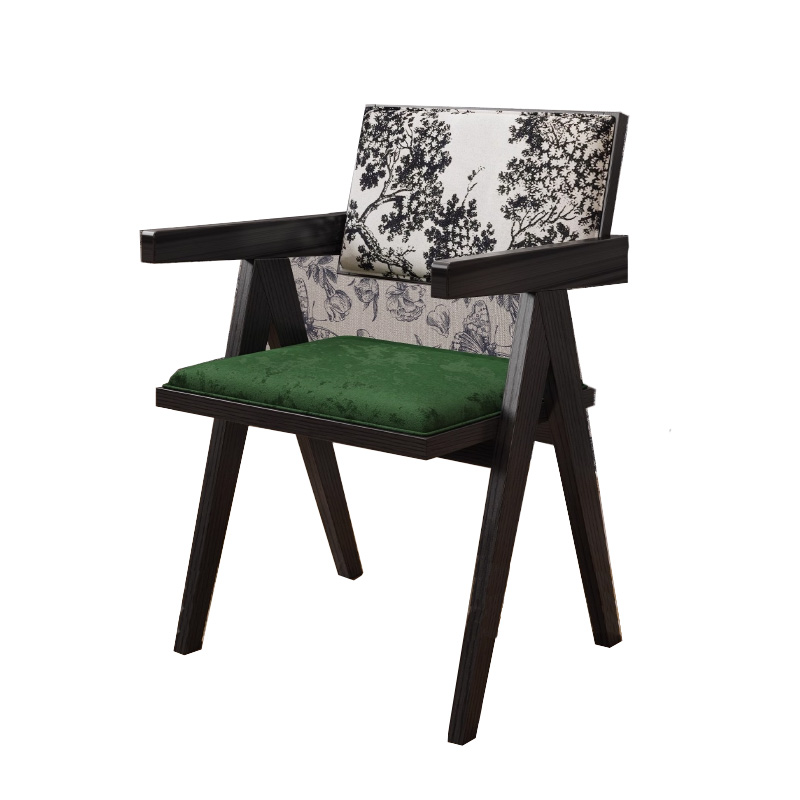In 2025, modern restaurant booth design focuses on three things:
minimalist comfort, sustainable craftsmanship, and modular flexibility.
Restaurants are shifting toward soft geometric lines, eco-certified materials, and customizable layouts that enhance both branding and guest experience. Booths are no longer static seats—they’re functional design anchors shaping space, acoustics, and brand storytelling.
1. What Defines “Modern” Booth Design in 2025?
Modern booth seating = Minimal form + Maximum comfort + Measurable performance.
| Design Element | 2025 Trend | Practical Impact |
|---|---|---|
| Geometry | Rounded, minimalist edges | Improves flow and accessibility |
| Upholstery | Vegan leather, recycled fabric | Meets ISO 14024 eco-labeling |
| Base Frame | Powder-coated steel | Complies with ASTM B117 corrosion testing |
| Color Palette | Neutral (taupe, sand, graphite) | Matches minimalist interiors |
| Acoustic Value | Upholstered high-backs | Reduces noise ≥25% (per ISO 354:2019) |
2. Why Booths Matter More Than Ever
Booths optimize both space and brand identity. According to a 2024 Restaurant Design Market Report (Statista),
“Over 62% of new restaurant projects include customized booth seating as a core element of layout planning.”
Key benefits include:
- Efficient use of corner or wall areas
- Enhanced acoustics and privacy
- Consistent brand atmosphere
- Durable ROI (average booth lifespan 8–10 years)
3. Sustainable Materials Are No Longer Optional
Today’s buyers value environmental certifications.
At Mingmeng, all booth lines comply with:
- ISO 14001 (Environmental Management)
- FSC-certified wood sourcing
- ASTM E84 flame-retardant foam standards
Popular eco-materials in 2025:
- Recycled eco-leather for premium touch
- Bamboo veneer panels (rapid renewability)
- Powder-coated aluminum frames (rustproof and recyclable)
4. Layout and Flow: The Hidden Power of Geometry
A restaurant’s layout = first impression + operational efficiency.
Proper booth placement influences how guests and servers move.
Best Practices:
- Allocate 10–20 sq. ft. per seat for comfort
- Use L-shaped booths in corners to utilize dead zones
- Mix booth zones with bar-height areas for varied ambiance
- Ensure ADA-compliant aisle clearance (≥36 inches per U.S. standard)
When layout and booth geometry work together, you achieve both style and circulation harmony.
5. Branding Through Booth Design
Booths are part of visual storytelling.
| Brand Type | Design Cue | Material Example |
|---|---|---|
| Fine Dining | Curved high-back booths | Velvet or eco-leather |
| Casual Café | Low-back open seating | Fabric upholstery + wood base |
| Industrial Bistro | Raw steel legs + wood top | Distressed finishes |
| Modern Minimalist | Seamless bench lines | Soft neutrals, hidden seams |
Consistency in booth style builds subconscious trust—customers “feel” your brand before they even read the menu.
6. Comfort Meets Acoustics
Noise levels directly influence dwell time and satisfaction.
Studies in the Journal of Environmental Psychology (2023) show:
“Acoustic comfort increases average customer stay by 18% in casual dining venues.”
Practical Design Notes:
- Upholstered booths absorb up to 30% airborne sound.
- Curved seat backs deflect echo toward acoustic panels.
- Mix soft and reflective materials for balanced soundscape.
7. Smart Features for the Digital Era
Technology is reshaping booth design:
- Wireless charging pads built into table bases
- LED ambient lighting integrated under seats
- Touchscreen menus seamlessly mounted near tabletops
- IoT occupancy sensors to monitor seat usage
These small details elevate convenience without disrupting a minimalist aesthetic.
8. Indoor vs Outdoor: The Durability Divide
| Feature | Indoor Booths | Outdoor Booths |
|---|---|---|
| Frame | Plywood / steel | Aluminum / galvanized steel |
| Upholstery | Fabric, leather | UV-resistant resin wicker |
| Maintenance | Occasional cleaning | Weatherproof coating |
| Weight | Medium | Heavy for wind resistance |
| Standard | ANSI/BIFMA X5.4 | ASTM G154 & ISO 4892 (UV aging) |
Outdoor booths are becoming a year-round design choice, especially for rooftops and terraces. Heavy bases and modular sections ensure both safety and flexibility.
FAQs About Modern Booth Design
Q1: How long do modern restaurant booths last?
With proper materials and maintenance, 8–10 years. Metal frames extend up to 15 years.
Q2: Are eco-friendly booths more expensive?
Initially yes (≈8–12% higher), but total cost of ownership is lower due to durability and fewer replacements.
Q3: What certifications should I check before purchasing?
Look for ISO 9001 (quality), ISO 14001 (environment), and ASTM durability tests for foam and coating.
Q4: How can booths help meet ADA accessibility?
Use modular designs to adjust seat depth and maintain clear pathways.
Summary Table — 2025 Design Priorities
| Category | 2020s Trend | 2025 Focus |
|---|---|---|
| Geometry | Straight angles | Soft, organic curves |
| Materials | PU leather | Eco-certified leather & fabric |
| Layout | Dense floor plans | Airy, flexible zoning |
| Tech | None | Built-in charging & IoT |
| Sustainability | Optional | Mandatory (ISO-certified) |
References
- ASTM International Standards: ASTM B117-19, ASTM E84-21a
- ISO 354:2019 — Acoustics: Measurement of Sound Absorption
- ISO 14001:2015 — Environmental Management Systems
- Statista, Global Restaurant Design Trends 2024 Report
- Journal of Environmental Psychology, Vol. 93, 2023
Final Thoughts
Modern restaurant booth design in 2025 is about more than looks—it’s about experience, flow, and responsibility.
When aesthetics meet engineering and sustainability, your space not only looks elegant but also feels timeless.
Contact Mingmeng Furniture for OEM and custom booth seating crafted to ISO and ASTM international standards.


 English
English Zulu
Zulu Igbo
Igbo Yoruba
Yoruba Xhosa
Xhosa Afrikaans
Afrikaans Sesotho
Sesotho Thai
Thai Vietnamese
Vietnamese Indonesian
Indonesian Malay
Malay Lao
Lao Myanmar
Myanmar Khmer
Khmer Turkish
Turkish Hausa
Hausa Portuguese
Portuguese Hindi
Hindi Arabic
Arabic Russian
Russian Japanese
Japanese Chinese
Chinese